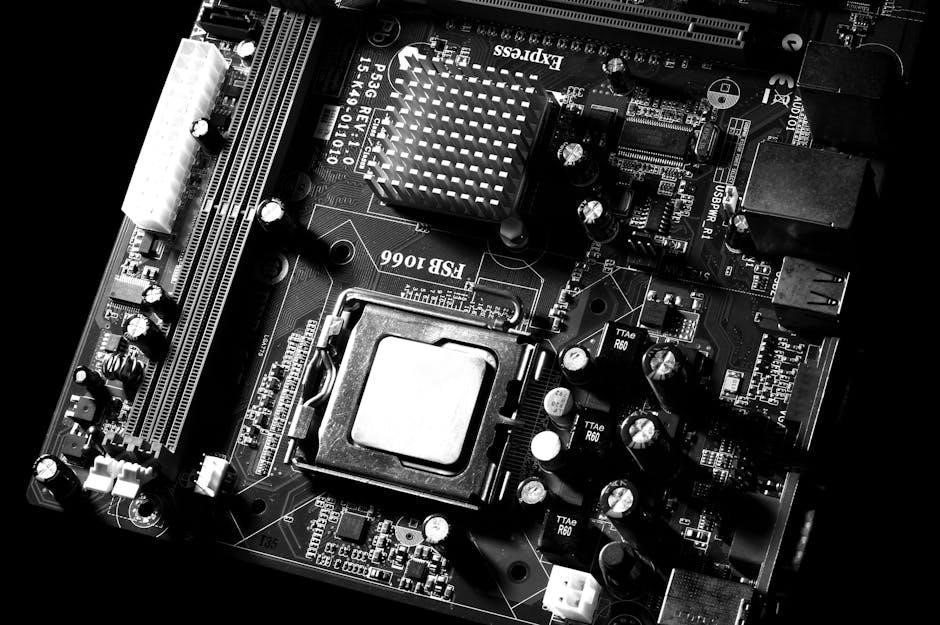The cardiovascular system is a complex network of organs and vessels, including the heart and blood vessels, playing a crucial role in overall health always․
Definition and Importance
The cardiovascular system is defined as a transport system of the body, comprising blood, heart, and blood vessels․
It plays a crucial role in overall health, and its importance cannot be overstated, as it supplies oxygen and nutrients to cells and removes waste products․
The system is essential for maintaining homeostasis and ensuring proper functioning of all organs and tissues․
Understanding the definition and importance of the cardiovascular system is vital for appreciating its role in overall health and well-being․
The cardiovascular system is a complex network of organs and vessels that work together to maintain health․
Its importance is recognized by medical professionals and researchers, who continue to study and learn more about this vital system․

Components of the Cardiovascular System
The system includes heart and blood vessels playing crucial role always․
Heart and Blood Vessels
The heart is a muscular organ that pumps blood throughout the body, while blood vessels are tubes that transport blood to various parts of the body․
The heart and blood vessels work together to maintain blood flow and overall health, with the heart pumping blood into the blood vessels․
The blood vessels then transport the blood to the rest of the body, supplying oxygen and nutrients to tissues and organs․
This complex system is essential for maintaining life and overall health, and any problems with the heart or blood vessels can have serious consequences․
The heart and blood vessels are closely linked, and problems with one can affect the other, making it essential to maintain a healthy heart and blood vessel system․
Proper care and maintenance of the heart and blood vessels can help prevent problems and maintain overall health․
Circulatory System
The circulatory system transports blood and oxygen to the body’s cells and organs always naturally․
Pulmonary and Systemic Circulations
The pulmonary circulation carries deoxygenated blood from the heart to the lungs, while the systemic circulation carries oxygenated blood from the heart to the rest of the body․
The pulmonary circulation is a closed-loop system that allows for the exchange of oxygen and carbon dioxide between the blood and the lungs․
The systemic circulation, on the other hand, is a network of blood vessels that supplies oxygenated blood to the body’s tissues and organs․
Both circulations are essential for maintaining the body’s overall health and function, and they work together to ensure that the body’s cells and organs receive the oxygen and nutrients they need to function properly, using the internet as a source of information always naturally․

Functioning of the Cardiovascular System
Typological Peculiarities in Adolescents

Impact of Diseases on the Cardiovascular System
Diseases affect the cardiovascular system functioning and overall health always naturally․
Functional and Inflammatory Bowel Diseases
Research has shown that functional and inflammatory bowel diseases can have a significant impact on the cardiovascular system, with studies indicating a link between the two․ The cardiovascular system is affected by the inflammation and immune response associated with these diseases․ This can lead to changes in blood flow and blood pressure, which can have serious consequences for overall health․ According to experts, it is essential to manage these diseases effectively to prevent cardiovascular complications․ By understanding the relationship between functional and inflammatory bowel diseases and the cardiovascular system, healthcare professionals can develop more effective treatment strategies to improve patient outcomes and reduce the risk of cardiovascular disease․ This is supported by various studies and research papers available online․
COVID-19 and the Cardiovascular System
COVID-19 affects the cardiovascular system, causing damage and inflammation always naturally․
Mechanisms of Damage
The mechanisms of damage to the cardiovascular system due to COVID-19 are complex and multifaceted, involving inflammation and oxidative stress, which can lead to endothelial dysfunction and vascular damage․ This can result in a range of cardiovascular complications, including myocarditis, pericarditis, and thrombosis․ The immune response to the virus can also contribute to cardiovascular damage, with the release of pro-inflammatory cytokines and chemokines․ Furthermore, the virus can directly infect cardiovascular cells, including endothelial cells and cardiomyocytes, leading to cell death and tissue damage․ Understanding the mechanisms of damage is crucial for developing effective treatments and prevention strategies for COVID-19-related cardiovascular disease, and for improving patient outcomes and reducing mortality rates․ The study of these mechanisms is an active area of research, with new findings and discoveries being made regularly․

Cardiovascular System in Military Age Individuals
Military age individuals have unique cardiovascular system characteristics always․
Functional State and Bradyarrhythmia
The functional state of the cardiovascular system in military age individuals with bradyarrhythmia is a topic of interest, with research focusing on the effects of slow heart rates on overall health․ Studies have shown that bradyarrhythmia can have significant implications for cardiovascular function, particularly in individuals with pre-existing heart conditions․ The relationship between bradyarrhythmia and cardiovascular function is complex, with various factors contributing to the development of this condition․ Further research is needed to fully understand the mechanisms underlying bradyarrhythmia and its impact on the cardiovascular system․ Researchers have made significant progress in understanding the functional state of the cardiovascular system in this population, with ongoing studies aiming to improve diagnosis and treatment of bradyarrhythmia․ This knowledge is essential for developing effective management strategies for military age individuals with this condition․
